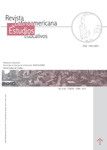Authors
Abstract
Education without having communication into account is unthinkable today. However, there exists a meaningful distance between reflections about this relationship and the daily practices in the Colombian educational institutions: Still, the role of the teacher, his/her authoritarian and, many times cryptic language, as well as the mimetic and tough attitudes of the students are preeminent. A situation like this does not allow for the construction of adequate learning environments and nurture a greater vicious cycle related with social mobility, inequity and violence. This is the sense of a qualitative research like this which inscribes to Goetz and LeCompte’s (1988) ethnographic perspective. The purpose of this research was to know the predominant kinds of communicative interaction between teachers and students in the classroom and in the playground which refer to the relationship teacher-student/teaching-learning in an educational institution in Manizales. The results show the multi-dimensional and paradoxical character of communication in the teaching-learning processes. For example, it was evident the poor value both teachers and students gice to their communicative interactions and the distinction between the verbal and non-verbal communication; two predominant modes coexist there: a vertical mode in the classroom and a horizontal mode in the playground. These differences generate continuities and ruptures in the communicative interactions which do not contribute to the legitimacy of educational practices carried out by the main characters.
References
Blaikie, N. W. H. (1991). Una crítica del uso de la triangulación en investigación social cualitativa y cuantificativa. Netherlands: Kluwer Academia Publishers.
Cabrera C., J. (2003). “Discurso Docente en el Aula”. Revista Estudios Pedagógicos, No. 29, pp. 7-26. Valdivia: Universidad Austral de Chile.
Caldeiro, G. P. (2005). “Interacción en el salón de Clase”. En: http://educacion.idoneos.com/index.php/290431 [consultado el 10 de enero de 2009].
Davis, F. (1976). La comunicación no verbal. Madrid: Alianza.
Ellis, R. & McClintock, A. (1993). Teoría y Práctica de la Comunicación Humana. Buenos Aires: Paidós Ibérica.
Fernández, I. & Cuadrado, I. (2008). “¿Son conscientes los profesores de secundaria de los recursos comunicativos verbales y no-verbales que emplean en el aula?”. Revista iberoamericana de educación, No. 46, Vol. 6. ISSN: 1681-5653.
Goetz, J. P. & Lecompte, M. D. (1988). Etnografía y Diseño Cualitativo en Investigación Educativa. Madrid: Morata.
Goffman, E. (1971). Relaciones en Público. New York: Basic Books.
Hopenhayn, M. (2003). “Educación, comunicación y cultura en la sociedad de la información: una perspectiva latinoamericana”. Revista de la CEPAL, N. 81, pp. 175-193.
Jarret, O. (2002). El recreo en la escuela primaria. México: ERIC/EECE Publicaciones Digest.
Knapp, M. L. (1999). La Comunicación no Verbal: El Cuerpo y el Entorno. 6 ed. Barcelona: Paidós Ibérica.
Martín-Barbero, J. (2002). La educación desde la comunicación. Buenos Aires: Norma.
Mehrabian, A. (1972). Nonverbal Communication. Chicago, IL: Aldine-Atherton.
________. (1981). Silent Messages: Implicit Communication of Emotions and Attitudes. (2nd ed.). Belmont, CA.: Wadsworth.
Parejo, J. (1995). Comunicación no verbal y Educación: El cuerpo y la escuela. Barcelona: Paidós Ibérica.
Ricci B. & Zani, B. (1990). La Comunicación como proceso social. México: Conaculta, Grijalbo.
Rodrigo A., M. (2005). Modelos de la Comunicación. Portal de la Comunicación. Universidad Autónoma de Barcelona.
Shannon, C. & Weaver, W. (1981): teoría matemática de la comunicación. Forja: Madrid.
Stubbs, M. & Delamont, S. (1978). Las relaciones profesor- alumno. Barcelona: Oikos- tau.
Verderber, R. F. (2005). Comunícate. México D.F.: Thomson.
Zamora C., G. (2006). “Interacción Comunicativa en los Procesos Educativos en las Aulas de la Escuela Normal No. 1 de Toluca en México”. En: www.comie.org.mx/congreso/memoria/v9/aplicacion/pat15.htm [consultado el 15 de abril de 2009].

 PDF (Español)
PDF (Español)
 FLIP
FLIP



















